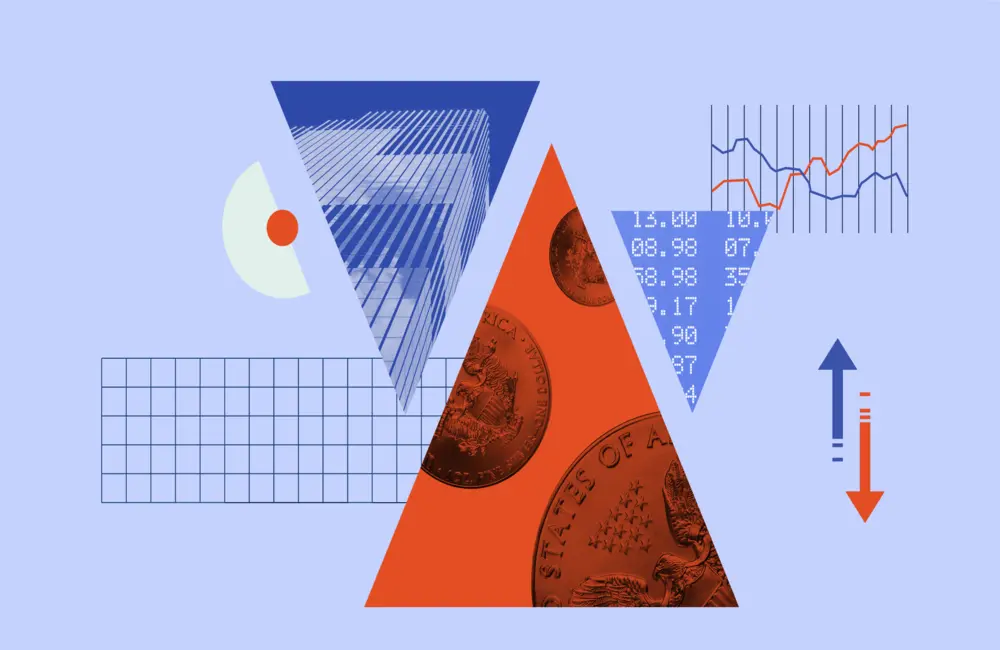Since losses above 20% are traditionally referred to as bear markets, that dubious honor was awarded.
The brighter side
But this initial impression should come with an asterisk. For starters, the tech-crash recession was bupkis, lasting just eight months and slashing the country’s real gross domestic product by 0.3%. Technically, the period fit the technical definition of a recession, but the economy was merely temporarily sluggish, not deeply troubled.
For one thing, the official definition of a bear market excludes four times that stocks fell more than 18 percent but less than 20 percent, those being summers of 1990, 1998 and 2011 and fall 2018. The first of those eras was followed by a mild recession. The other three were false alarms, as was Black Monday.
So by setting the qualifying hurdle at 18%, you have a much happier prognosis for how this would go under a slightly loosened bear-market standard. In the last half century, US stocks have dropped to the tune of 18% or more on 10 occasions. Four of those stock market slumps were false alarms; two came along with mild recessions; and four were linked with the real thing. By this metric, the odds of a genuinely bad outcome drop to 40%, instead of the original 83%. Better news indeed.
A lagging indicator
The US stock market is considered a leading indicator, a sign of what’s to come. Most of the time, equity prices do not act as economic guides. The stock market rallied in April 2020, even amid concerns about COVID, anticipating a return to corporate profitability in the future, for example. I wondered if the same was true for bear markets and recessions?
So said this column’s headline and the answer surprised me. It turns out that the beginnings of bear markets can precede slides into economic recessions, but when a bear arrives, according to the 20% rule, recession has already begun. Here is how long the six previous bear markets were away from the recessions that came along with them: Except for March 2001, all values are negative. Bear markets didn’t lead the economy; they trailed it.
The economic difficulties, for the most part, were already apparent when the bear showed up. In 1974 and 2008, the economy was in the throes of its second down quarter of three attempts. The context in 1982 was clearer still, with the bear market coinciding with a recession that was two years old. Only in 2001, during a mild recession, and in 2020, when it hit us fast and hard, did the economy fail to lead the stock market. In those instances, the events were simultaneous.
Present conditions
That would raise the obvious question: Is the price of stocks today ratcheting along with the advance of the economy? Hard to say. US real GDP, adjusted for inflation, shrank 1.5% in this year’s first quarter. If that trend were to hold, then this bear market would behave normally by arriving several months after a recession started. But the majority of researchers as evident from this June 15 release from The Conference Board think second-quarter GDP will be positive. Maybe their estimates will turn out to be over optimistic. But currently, the indications of a recession are more distant than they were at the times of the bear markets of 1974, 1982 and 2008.
There is another difference between the current bear market and those that came before it: the jobless rate. Typically, a recessionary bear market comes after the unemployment rate has started to rise. (The only exception again was in 2020, because COVID had its almost immediate impact.) In contrast, unemployment is now at a 50 year low.
With the exception of early 2020, when COVID’s onslaught simultaneously sunk both unemployment and stock prices, unemployment in recessions linked with bear markets has constantly risen for many months before stock costs fell more than 20%. (One example: The April 1974 bear market came after five straight months of rising unemployment.) If this bear market does indeed coincide with recession, the signal yielded by the unemployment rate will look starkly different than past episodes.
The upshot
A cursory look at the evidence suggests that bear markets are associated with recessions already in progress. But looking at it more broadly by 1) softening what qualifies as a bear market, 2) making a distinction between mild and severe “recessions” as defined by most economists and 3) using both GDP-growth and unemployment-rate data that conclusion changes. While a recession in 2022 certainly is possible and becomes more likely with each interest-rate increase by the Federal Reserve, history says the current bear market is a false alarm.























